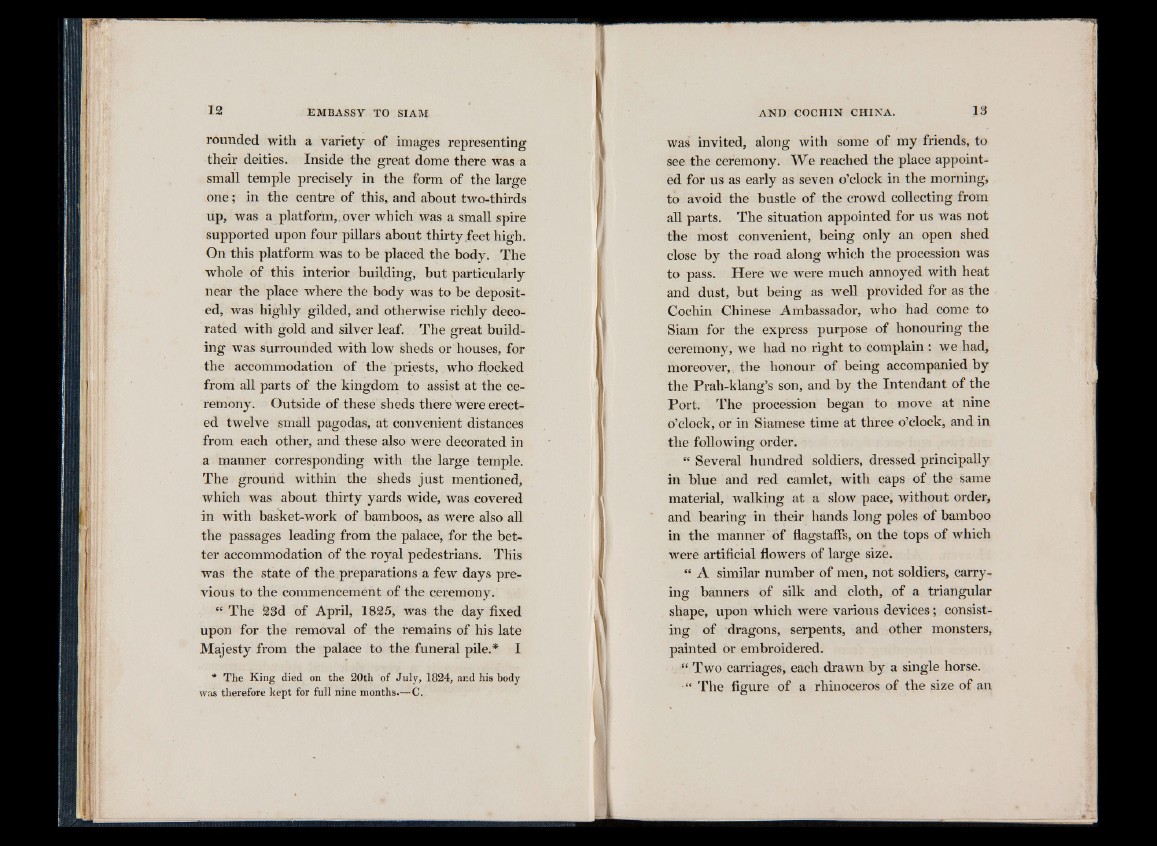
rounded with a variety of images representing
their deities. Inside the great dome there was a
small temple precisely in the form of the large
one; in the centre of this, and about two-thirds
up, was a platform,.over which was a small spire
supported upon four pillars about thirty .feet high.
On this platform was to be placed the body. The
whole of this interior building, but particularly
near the place where the body was to be deposited,
was highly gilded, and otherwise richly decorated
with gold and silver leaf. The great building
was surrounded with low sheds or houses, for
the accommodation of the priests, who flocked
from all parts of the kingdom to assist at the ceremony.
Outside of these sheds there were erected
twelve small pagodas, at convenient distances
from each other, and these also were decorated in
a manner corresponding with the large temple.
The ground within the sheds just mentioned,
which was about thirty yards wide, was covered
in with basket-work of bamboos, as were also all
the passages leading from the palace, for the better
accommodation of the royal pedestrians. This
was the state of the. preparations a few days previous
to the commencement of the ceremony.
“ The 23d of April, 1825, was the day fixed
upon for the removal of the remains of his late
Majesty from the palace to the funeral pile.* I
* The King died on the 20th of July, 1824, and his body
was therefore kept for full nine months.—C.
was invited, along with some of my friends, to
see the ceremony. We reached the place appointed
for us as early as seven o’clock in the morning,
to avoid the bustle of the crowd collecting from
all parts. The situation appointed for us was not
the most convenient, being only an open shed
close by the road along which the procession was
to pass. Here we were much annoyed with heat
and dust, but being as well provided for as the
Cochin Chinese Ambassador, who had come to
Siam for the express purpose of honouring the
ceremony, we had no right to complain : we had,
moreover, the honour of being accompanied by
the Prah-klang’s son, and by the Intendant of the
Port. The procession began to move at nine
o’clock, or in Siamese time at three o’clock, and in
the following order.
“ Several hundred soldiers, dressed principally
in blue and red camlet, with caps of the same
material, walking at a slow pace, without order,
and bearing in their hands long poles of bamboo
in the manner of flagstafifs, on the tops of which
were artificial flowers of large size.
“ A similar number of men, not soldiers, carrying
banners of silk and cloth, of a triangular
shape, upon which were various devices; consisting
of dragons, serpents, and other monsters,
painted or embroidered.
f Two carriages, each drawn by a single horse.
“ The figure of a rhinoceros of the size of an